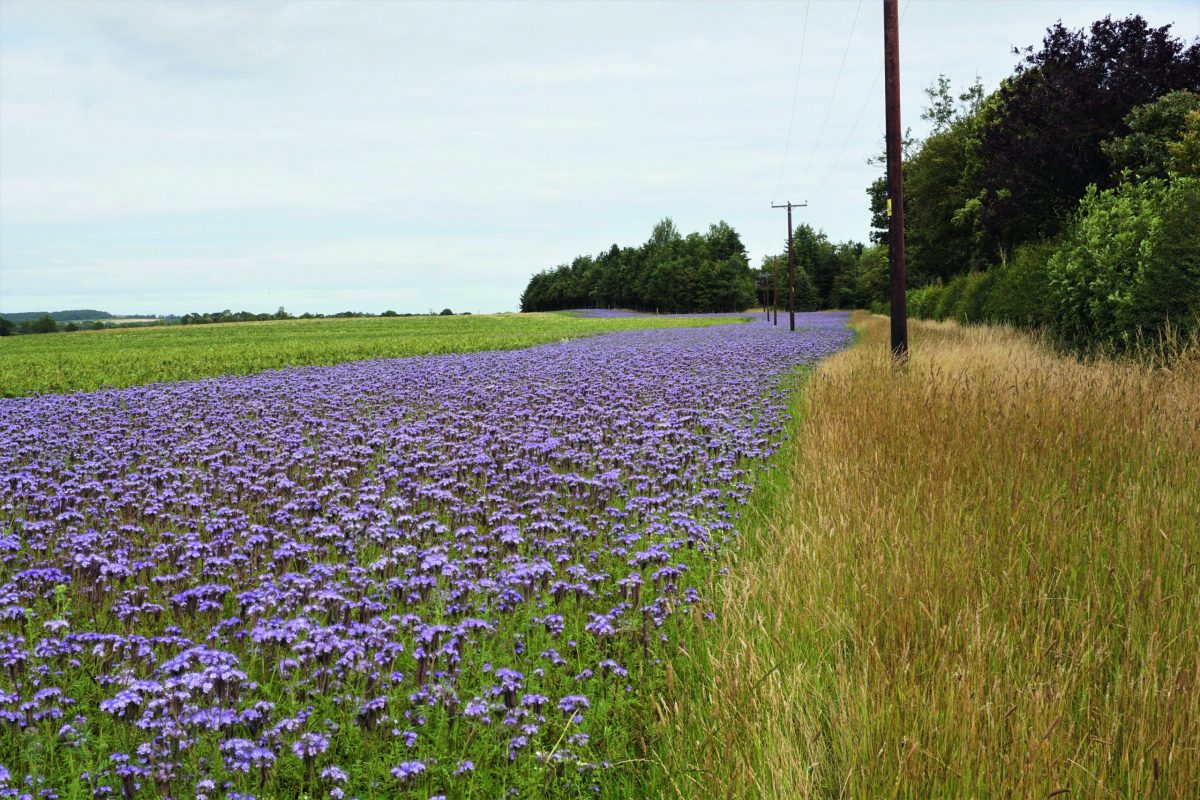How land managers today can learn lessons from the past
Many landowners are once again taking a more regenerative approach to farming, and there are great lessons to be learned from the past, says Alan Edwards

Phacelia is a good source of pollen and nectar for pollinators, while also conditioning the soil
“How did you get on last night, Davey?” came the inquisitive voice from over the garden hedge. One of the estate shepherds was enquiring about some recent lamb losses. Davey, my first headkeeper, replied with a calm voice. “We’ve done good. Alan accounted for his first vixen.” It was obvious that the den we had found housed the culprit. This was many years ago now — my first real challenge to make a difference had indeed been successful, and a wave of pride and sense of achievement swept over me. This feeling has remained to this day.
Davey proclaimed that time spent in the garden was time well spent, and everyone knew that if you were in the garden it signalled that you had been at work early or, as in this case, late. Little did I know it then, but many of these early steps would help shape my life and become a valuable reference for future events.
There’s no doubt that great change has occurred in the countryside in the past 50 years or so. Change has, for the best part, been good, but many of the past standards have been lost in a race to become progressive. The farmed environment has changed out of all recognition and taken on a pace that has been hard to keep abreast of. However, I’m beginning to see a subtle yet real change in attitudes towards how we will continue with our farming.
At Bywell we are currently working with a farm contractor who ‘gets it’. His business is based on a commercial yet regenerative approach, with subtle hints towards a more sustainable future. We are partnering with him not only to deliver a viable arable enterprise but a better and richer diversity based on past and current thinking. Music to my ears. When I arrived at Bywell, the farmed environment had very little other than a well-honed and efficient arable business. People worked hard and produced crops with chemicals, and little or no care was given to the soil or the soil structure. With this chemical approach to farming, every inch of ground was utilised and no room remained for anything else.
How differently we now look upon the land. I remember the fight to establish the first conservation margin — now the landscape is full of conservation measures designed to deliver for a range of species. The journey doesn’t end here; in fact, in many respects it’s just the beginning. Last year I wrote of the change in the shape of stubble fields on the estate. Now we not only have overwinter stubble fields, but enhancements to these fields aimed at improving soil condition mean that continuous cover dominates. It’s a win- win for the environment and viable crop production.
Our local beekeeper almost crashed his car the first time he drove past one of our covercrop fields; the phacelia in its vivid blue full glory caused him to pull over and sing the praises of what he was witnessing. For many conservation projects and wild bird shoots around the country, this has been common practice for a good few years now, and those who have forged the way deserve acknowledgement. Their early and unselfish vision coupled with financial sacrifice has led the way for others to follow. Bywell has played its part in this and almost daily someone is asking positive questions about the conservation project, its aims and long-term goals.
Custodian
Less than a year after my first vixen was recorded, I became the custodian of Woodhouse garden. Davey had sadly passed on and the reins of responsibility for the wild bird shoot were tentatively handed over. No buzzwords described the state of the farmed environment like today’s catchy evocative wordings: organic, regenerative, rewilding, companion cropping. All of these and more were commonplace and could be found on every farm. Organic matter was the key to soil life and all knew that soil structure was the deliverer of good, healthy crops.
Perhaps I’ve already seen the future in the past and just need to replicate it throughout our conservation area?








